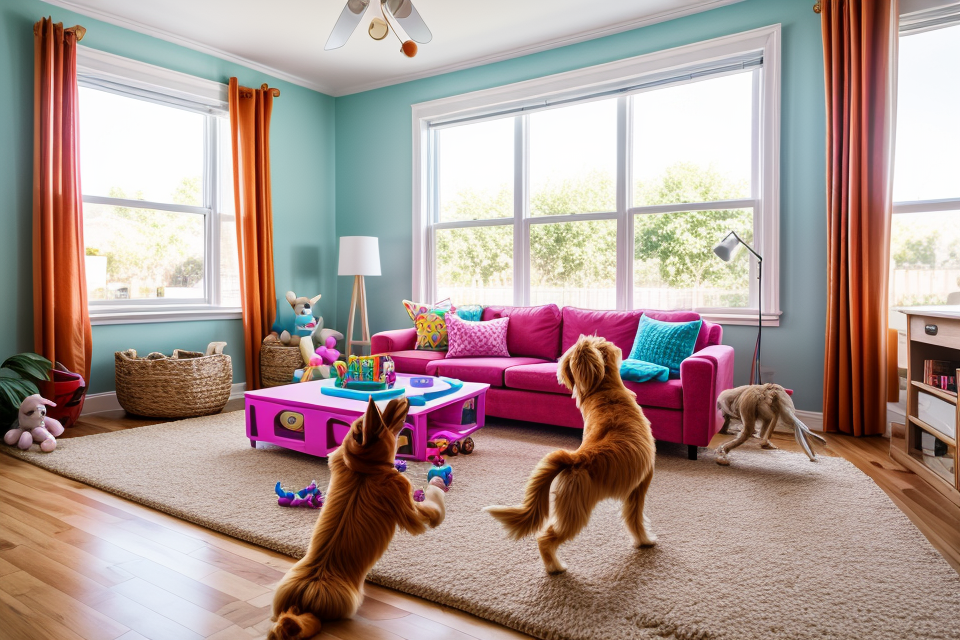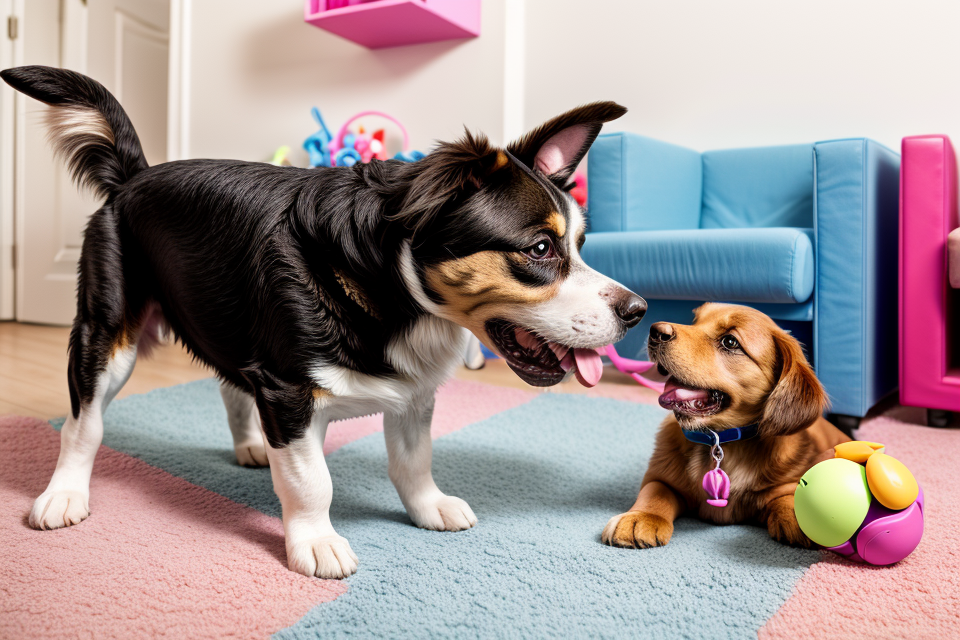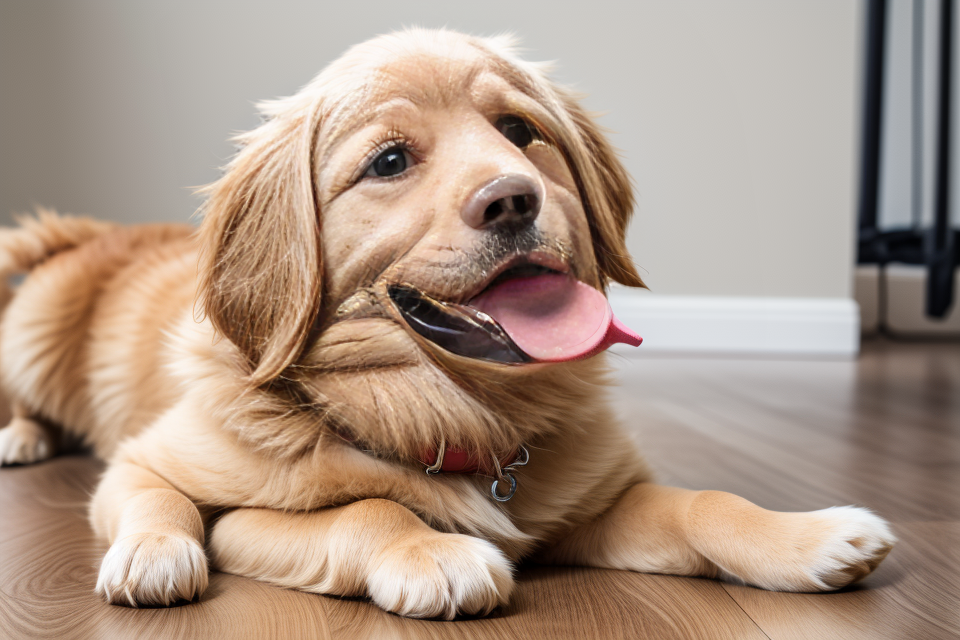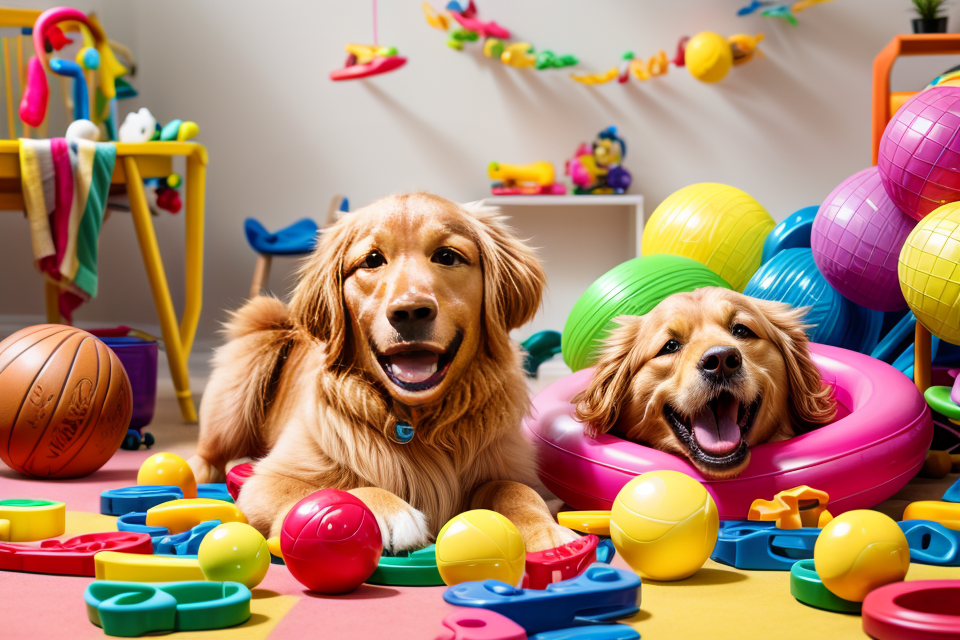Is your furry friend getting enough playtime with their toys? Dogs are known to be playful creatures, but how much playtime is enough for them? It’s essential to know how long you should encourage your dog to play with toys to ensure they stay mentally and physically stimulated. This article will provide insights into the ideal duration for dog toy playtime and tips on how to make the most of it. So, let’s dive in and explore the world of dog toy playtime!
It is recommended to encourage your dog to play with toys for at least 15-20 minutes per day, as it helps with their physical and mental stimulation. However, it’s important to monitor their behavior and ensure they are not becoming overly possessive or aggressive with the toys. Additionally, rotating toys regularly can help keep the playtime interesting and prevent boredom.
The Importance of Playtime for Dogs
Physical Benefits of Playtime
- Burns off energy
- Dogs are naturally energetic animals, and playing with toys is an excellent way to expend some of that energy. When dogs play with toys, they are using their natural instincts to hunt, chase, and retrieve, which helps to burn off excess energy and prevent destructive behavior.
- Strengthens muscles
- Playing with toys can help to strengthen a dog’s muscles, particularly in their jaws, neck, and back. This is because dogs need to use their mouths and teeth to grab and hold onto toys, and they may also need to jump, leap, and run to catch toys, which engages their core muscles.
- Improves cardiovascular health
- Regular playtime can help to improve a dog’s cardiovascular health by strengthening their heart and lungs. When dogs play, their heart rate increases, which helps to improve circulation and increase oxygen flow throughout their body. This can help to prevent heart disease and other cardiovascular problems later in life.
Overall, playing with toys is an important part of a dog’s physical health and wellbeing. By encouraging regular playtime, dog owners can help to keep their pets healthy, happy, and active for years to come.
Mental Benefits of Playtime
- Stimulates brain activity:
- Dogs are naturally curious, and playing with toys provides them with an opportunity to explore and investigate their environment. This helps to stimulate their brains and keeps them mentally alert.
- Toys can also be used to teach dogs new skills, such as how to retrieve or how to play hide and seek. These activities require dogs to use their brains to problem-solve and think critically.
- Enhances problem-solving skills:
- Playing with toys requires dogs to use their problem-solving skills to figure out how to manipulate the toy to get the desired outcome. For example, a dog may need to figure out how to knock a toy off a high shelf or how to get a toy out of a narrow space.
- This type of mental stimulation helps to keep dogs mentally sharp and can even help to prevent cognitive decline as they age.
- Boosts confidence and self-esteem:
- Playing with toys can also help to boost a dog’s confidence and self-esteem. When dogs successfully complete a task or solve a problem, they feel a sense of accomplishment and pride.
- Additionally, playing with toys can provide dogs with a sense of control over their environment, which can help to reduce anxiety and stress levels.
Overall, playing with toys provides dogs with important mental stimulation that helps to keep them mentally and emotionally healthy. By encouraging your dog to play with toys for at least 15-20 minutes per day, you can help to ensure that they remain happy, healthy, and well-adjusted.
Factors Affecting Playtime Duration
Age and Breed of the Dog
Younger Dogs Need More Playtime
Younger dogs have higher energy levels and require more playtime to burn off their excess energy. This is especially true for puppies, who are always on the go and are constantly exploring their surroundings. As a result, it is important to provide younger dogs with plenty of toys and opportunities for play, as this will help to keep them mentally and physically stimulated.
Breed-Specific Needs and Energy Levels
Different breeds of dogs have different energy levels and requirements for playtime. For example, high-energy breeds such as Retrievers and Terriers require more playtime than low-energy breeds such as Bulldogs and Pugs. Additionally, some breeds may have specific needs that need to be taken into consideration when determining how long to encourage them to play with toys. For example, German Shepherds may require more mental stimulation than physical exercise, while Labradors may need more physical exercise than mental stimulation. It is important to understand the specific needs of your dog’s breed and to tailor their playtime accordingly.
Time Constraints and Other Commitments
As a responsible dog owner, it’s important to ensure that your furry friend gets enough exercise and mental stimulation. However, time constraints and other commitments can make it challenging to provide your dog with the ideal amount of playtime. In this section, we’ll explore how to balance playtime with other activities and set realistic expectations for playtime duration.
Balancing Playtime with Other Activities
Dogs require a significant amount of daily exercise to maintain optimal physical and mental health. While playtime with toys is an excellent way to provide this exercise, it’s not the only activity that your dog needs. Other activities, such as walks, hikes, and trips to the park, are also crucial for your dog’s overall well-being.
As a result, it’s essential to balance playtime with other activities to ensure that your dog is getting the exercise and mental stimulation they need. This may involve setting aside specific times throughout the day for playtime, incorporating playtime into walks or hikes, or scheduling additional exercise sessions if necessary.
Setting Realistic Expectations for Playtime Duration
It’s important to set realistic expectations for playtime duration based on your dog’s individual needs and energy levels. Some dogs may require more playtime than others, and it’s essential to take your dog’s age, breed, and overall health into consideration when determining the appropriate amount of playtime.
Additionally, it’s important to remember that playtime should be enjoyable for both you and your dog. If you find that playtime is becoming a chore or causing stress for either you or your dog, it may be necessary to adjust the frequency or duration of playtime sessions.
In conclusion, balancing playtime with other activities and setting realistic expectations for playtime duration are crucial for ensuring that your dog is getting the exercise and mental stimulation they need while avoiding burnout or stress for both you and your furry friend.
Tips for Encouraging Playtime with Toys
Rotate Toys to Keep Play Interests High
- Dogs get bored easily
- Rotating toys keeps playtime interesting
Rotating Toys to Keep Play Interests High
- One of the most effective ways to keep your dog engaged during playtime is by rotating their toys.
- Dogs tend to get bored easily, and their interest in a particular toy may wane after a few plays.
- By rotating their toys, you can keep their play interests high and prevent them from becoming bored with the same old toys.
- Rotating toys also helps to prevent your dog from becoming too possessive or territorial over certain toys.
- When rotating toys, it’s important to ensure that the toys you introduce are safe and appropriate for your dog’s size and play style.
- It’s also a good idea to introduce new toys gradually, so your dog can become familiar with them and learn how to play with them appropriately.
- You can rotate toys by keeping a selection of different types of toys available, such as stuffed animals, balls, ropes, and puzzle toys.
- Rotating toys can also help to prevent your dog from becoming too reliant on certain toys, which can lead to compulsive or repetitive behaviors.
- By keeping a variety of toys available, you can encourage your dog to explore new toys and play in different ways, which can help to prevent these types of behaviors from developing.
- Rotating toys can also help to prevent your dog from becoming too attached to certain toys, which can lead to separation anxiety when those toys are not available.
- By keeping a variety of toys available, you can help to reduce your dog’s reliance on any one toy, and make playtime more enjoyable and less stressful for both you and your dog.
Offer a Variety of Toys
One of the most effective ways to keep your dog engaged and interested in playing with toys is to offer them a variety of options. By providing a range of different textures, materials, and types of toys, you can keep your dog entertained and stimulated for longer periods of time. Here are some specific tips for offering a variety of toys:
Different Textures and Materials
Dogs have a natural curiosity about different textures and materials, so offering them a range of options can help keep them engaged and interested in playing with toys. Some examples of toys with different textures and materials include:
- Rubber toys with a rough surface
- Plush toys with different fabrics and textures
- Toys made from rope or cord
- Toys with different levels of firmness, such as soft and squishy toys or harder plastic toys
Squeaky, Rattling, and Squishy Toys
Some dogs love toys that make noise or have a squishy texture. Squeaky toys can be especially appealing to dogs, as they can be used to play a game of hide and seek or to entice your dog to play fetch. Rattling toys can also be appealing, as they can mimic the sound of prey or other small animals. Squishy toys can be used for tug-of-war or for cuddling up with your dog.
Interactive and Solo Toys
Dogs have different play styles, and some may prefer to play alone while others prefer to play with their owners. Offering a mix of interactive and solo toys can help keep your dog engaged and satisfied. Interactive toys can include puzzle toys that require your dog to figure out how to get a treat out, or toys that can be played with together, such as a ball or a frisbee. Solo toys can include chew toys or toys that can be filled with treats or peanut butter for your dog to enjoy on their own.
Overall, offering a variety of toys can help keep your dog engaged and interested in playing for longer periods of time. By providing a range of different textures, materials, and types of toys, you can keep your dog entertained and stimulated, while also helping to prevent boredom and destructive behavior.
Provide Supervision and Engagement
Providing supervision and engagement is essential when encouraging your dog to play with toys. This will ensure that your dog is safe and having fun during playtime. Here are some tips to keep in mind:
- Ensure your dog is safe while playing: Before allowing your dog to play with a toy, make sure it is safe and appropriate for them. Check for any small parts, sharp edges, or materials that could be harmful. It’s also essential to keep an eye on your dog during playtime to prevent any accidents or injuries.
- Encourage and participate in playtime: Joining in on the fun is a great way to bond with your dog and encourage them to play. You can also provide guidance and teach them how to play with the toys correctly. This will help prevent frustration and ensure that your dog has a positive experience with the toys.
- Offer praise and rewards: Positive reinforcement is a powerful tool when encouraging your dog to play with toys. Offer praise and rewards when they play with the toys appropriately or try new things. This will encourage them to continue playing and exploring with the toys.
- Rotate toys regularly: Dogs can quickly become bored with the same toys, so it’s essential to rotate them regularly. This will keep playtime exciting and prevent your dog from losing interest in the toys.
- Monitor playtime duration: While playtime with toys is essential for your dog’s physical and mental health, it’s also crucial to monitor the duration of playtime. Overplaying with toys can lead to exhaustion, so it’s essential to take breaks and give your dog time to rest and recover.
FAQs
1. How long should dogs play with toys?
Answer:
The amount of time your dog should spend playing with toys can vary depending on their age, breed, and individual energy levels. However, as a general guideline, it is recommended to encourage playtime for at least 15-20 minutes per day. This can be broken up into shorter play sessions throughout the day. It’s important to monitor your dog’s behavior during playtime to ensure they are not becoming overly exhausted or showing signs of boredom.
2. Is it necessary to provide my dog with toys?
Yes, providing your dog with toys is important for their physical and mental stimulation. Toys can help satisfy your dog’s natural instinct to chew, dig, and play-hunt, as well as provide entertainment and relieve boredom. Additionally, toys can help prevent destructive behavior such as chewing on furniture or shoes.
3. What type of toys are best for my dog?
There are many types of toys that can be enjoyable for dogs, including plush toys, rope toys, rubber toys, and interactive toys such as puzzle toys and hide-and-seek toys. It’s important to choose toys that are appropriate for your dog’s size and strength, as well as their chewing and playing style. Consider your dog’s preferences and interests when selecting toys, and rotate them frequently to keep playtime interesting.
4. How often should I replace my dog’s toys?
It’s recommended to regularly check your dog’s toys for wear and tear, and replace them as needed. This can help prevent the spread of germs and bacteria, as well as ensure that your dog continues to find their toys engaging and entertaining. As a general guideline, you may want to replace toys every few months, or sooner if they become damaged or your dog begins to lose interest in them.
5. Can my dog play with toys outside?
Yes, playing with toys outside can be a great way to provide your dog with fresh air, exercise, and mental stimulation. However, it’s important to supervise your dog during outdoor playtime and ensure that they are safe from any potential hazards such as sharp objects, water, or other animals. It’s also a good idea to provide your dog with a variety of toys that can be played with both indoors and outdoors.



